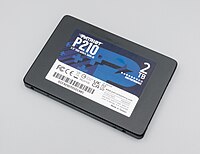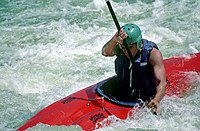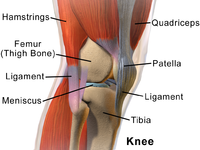
Assessment of Validity and Reliability of the 1-Minute Sit-to-Stand Test to Measure the Heart Rate Response to Exercise in Healthy Children.
Sign Up to like & getrecommendations! Published in 2019 at "JAMA pediatrics"
DOI: 10.1001/jamapediatrics.2019.1084
Abstract: This study examines the concurrent validity and reliability of the sit-to-stand test to quantify heart rate response during submaximal exercise in healthy Belgian children. read more here.
Keywords: sit stand; rate response; validity reliability; exercise healthy ... See more keywords

Human sit-to-stand transfer modeling towards intuitive and biologically-inspired robot assistance
Sign Up to like & getrecommendations! Published in 2017 at "Autonomous Robots"
DOI: 10.1007/s10514-016-9553-5
Abstract: Sit-to-stand (STS) transfers are a common human task which involves complex sensorimotor processes to control the highly nonlinear musculoskeletal system. In this paper, typical unassisted and assisted human STS transfers are formulated as optimal feedback… read more here.
Keywords: sit stand; sts transfers; human sit; stand transfer ... See more keywords

The role of thigh muscular efforts in limiting sit-to-stand capacity in healthy young and older adults
Sign Up to like & getrecommendations! Published in 2017 at "Aging Clinical and Experimental Research"
DOI: 10.1007/s40520-016-0702-7
Abstract: Aging is associated with an unavoidable decline in muscle mass, known as sarcopenia, leading to neuromuscular declines, muscle weakness, and subsequent disability. One particular measure utilized by rehabilitative professionals in evaluating functional declines in older… read more here.
Keywords: sit stand; task times; capacity; role thigh ... See more keywords

Muscle thickness contribution to sit-to-stand ability in institutionalized older adults
Sign Up to like & getrecommendations! Published in 2019 at "Aging Clinical and Experimental Research"
DOI: 10.1007/s40520-019-01328-x
Abstract: Ultrasound is a low-cost, safe and accessible tool to use on muscle mass assessment. The relations between muscle thickness and lower limb function have not been investigated in institutionalized elderly people. The purpose of the… read more here.
Keywords: muscle; sit stand; rectus femoris; muscle thickness ... See more keywords

Experimental study on sit-to-stand (STS) movement: a systematic review
Sign Up to like & getrecommendations! Published in 2021 at "International Journal of Intelligent Robotics and Applications"
DOI: 10.1007/s41315-021-00188-x
Abstract: Sit-to-stand (STS) movement is a very common task for the elderly and the patients with lower limb dysfunction in daily life. We hope to summarize the methods of STS experiment and the factors affecting STS,… read more here.
Keywords: sit stand; experimental study; movement; sts movement ... See more keywords

Trunk muscle forces and spinal loads in persons with unilateral transfemoral amputation during sit‐to‐stand and stand‐to‐sit activities
Sign Up to like & getrecommendations! Published in 2019 at "Clinical Biomechanics"
DOI: 10.1016/j.clinbiomech.2019.02.021
Abstract: Background: Alterations and asymmetries in trunk motions during activities of daily living, involving lower extremities, are suggested to cause higher spinal loads in persons with unilateral lower limb amputation. Given the repetitive nature of most… read more here.
Keywords: amputation; sit stand; sit; stand stand ... See more keywords

An integrated approach for robotic Sit-To-Stand assistance: Control framework design and human intention recognition
Sign Up to like & getrecommendations! Published in 2021 at "Control Engineering Practice"
DOI: 10.1016/j.conengprac.2020.104680
Abstract: Abstract In this paper, the problem of robotic Sit-To-Stand (STS) assistance is studied. The objective is to effectively assist individuals in need to stand up from a seated position using a robot manipulator. To achieve… read more here.
Keywords: sit stand; assistance; control; robotic sit ... See more keywords

Lumbar loads and trunk kinematics in people with a transtibial amputation during sit-to-stand.
Sign Up to like & getrecommendations! Published in 2018 at "Journal of biomechanics"
DOI: 10.1016/j.jbiomech.2017.12.030
Abstract: People with a transtibial amputation have numerous secondary health conditions, including an increased prevalence of low back pain. This increased prevalence may be partially explained by altered low back biomechanics during movement. The purpose of… read more here.
Keywords: amputation; transtibial amputation; trunk kinematics; sit stand ... See more keywords

Stability basin estimates fall risk from observed kinematics, demonstrated on the Sit-to-Stand task.
Sign Up to like & getrecommendations! Published in 2018 at "Journal of biomechanics"
DOI: 10.1016/j.jbiomech.2018.02.022
Abstract: The ability to quantitatively measure stability is essential to ensuring the safety of locomoting systems. While the response to perturbation directly reflects the stability of a motion, this experimental method puts human subjects at risk.… read more here.
Keywords: stability basin; sit stand; motion; kinematics ... See more keywords

High density muscle size and muscle power are associated with both gait and sit-to-stand kinematic parameters in frail nonagenarians.
Sign Up to like & getrecommendations! Published in 2020 at "Journal of biomechanics"
DOI: 10.1016/j.jbiomech.2020.109766
Abstract: Frailty is an important concept in clinical and demographic research in the elderly because of its incidence level and its relationship with adverse outcomes. Functional ability declines with advanced age, likely due to changes in… read more here.
Keywords: sit stand; muscle; muscle quality; muscle power ... See more keywords

Automated assessment and classification of spine, hip, and knee pathologies from sit-to-stand movements collected in clinical practice.
Sign Up to like & getrecommendations! Published in 2021 at "Journal of biomechanics"
DOI: 10.1016/j.jbiomech.2021.110786
Abstract: Efficient, cost-effective methods for quantifying patient biomechanics at the point of care can facilitate faster and more accurate diagnoses. This work presents a new method to diagnose pre-surgical back, hip, and knee patients by analysing… read more here.
Keywords: sit stand; classification; movements collected; hip knee ... See more keywords